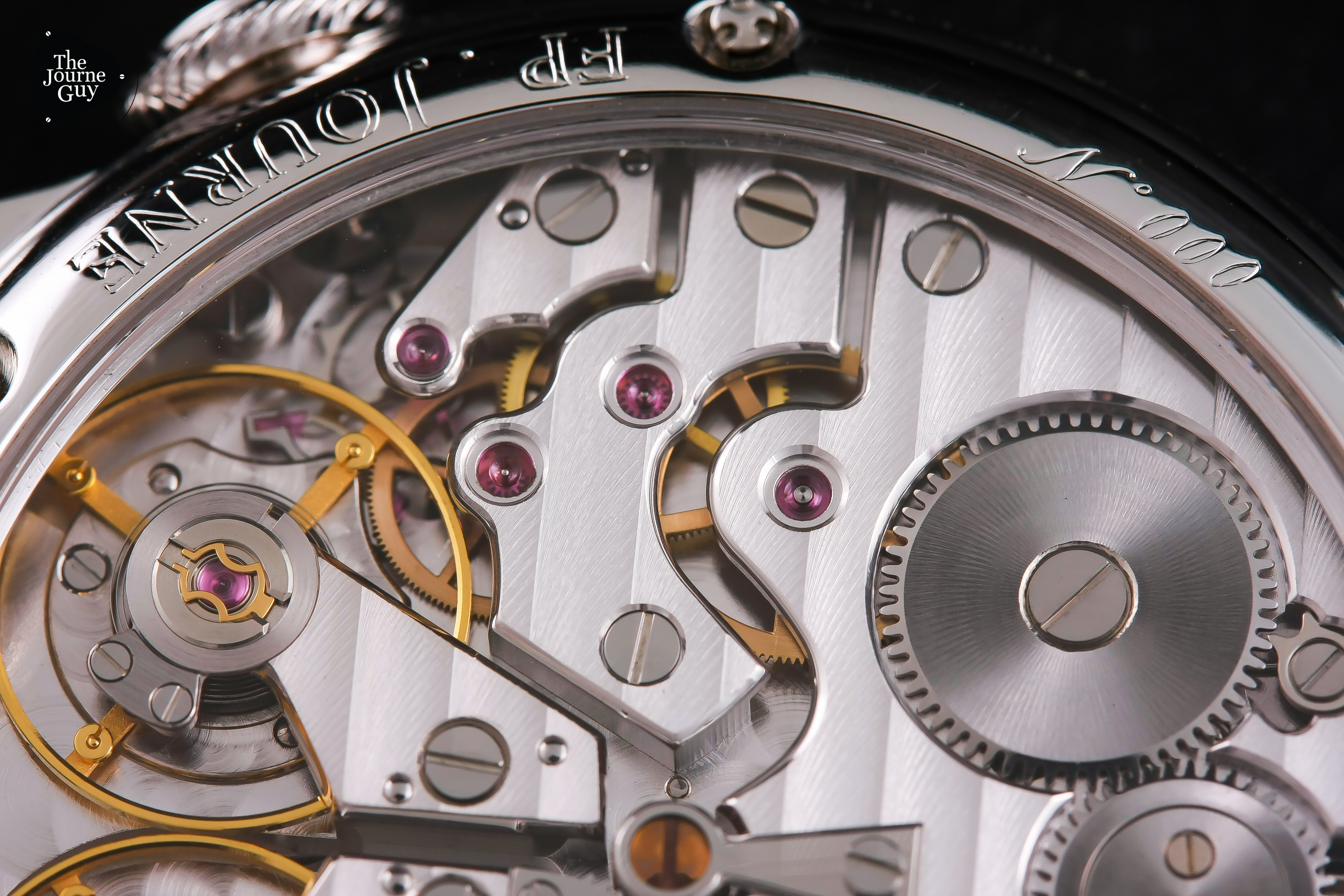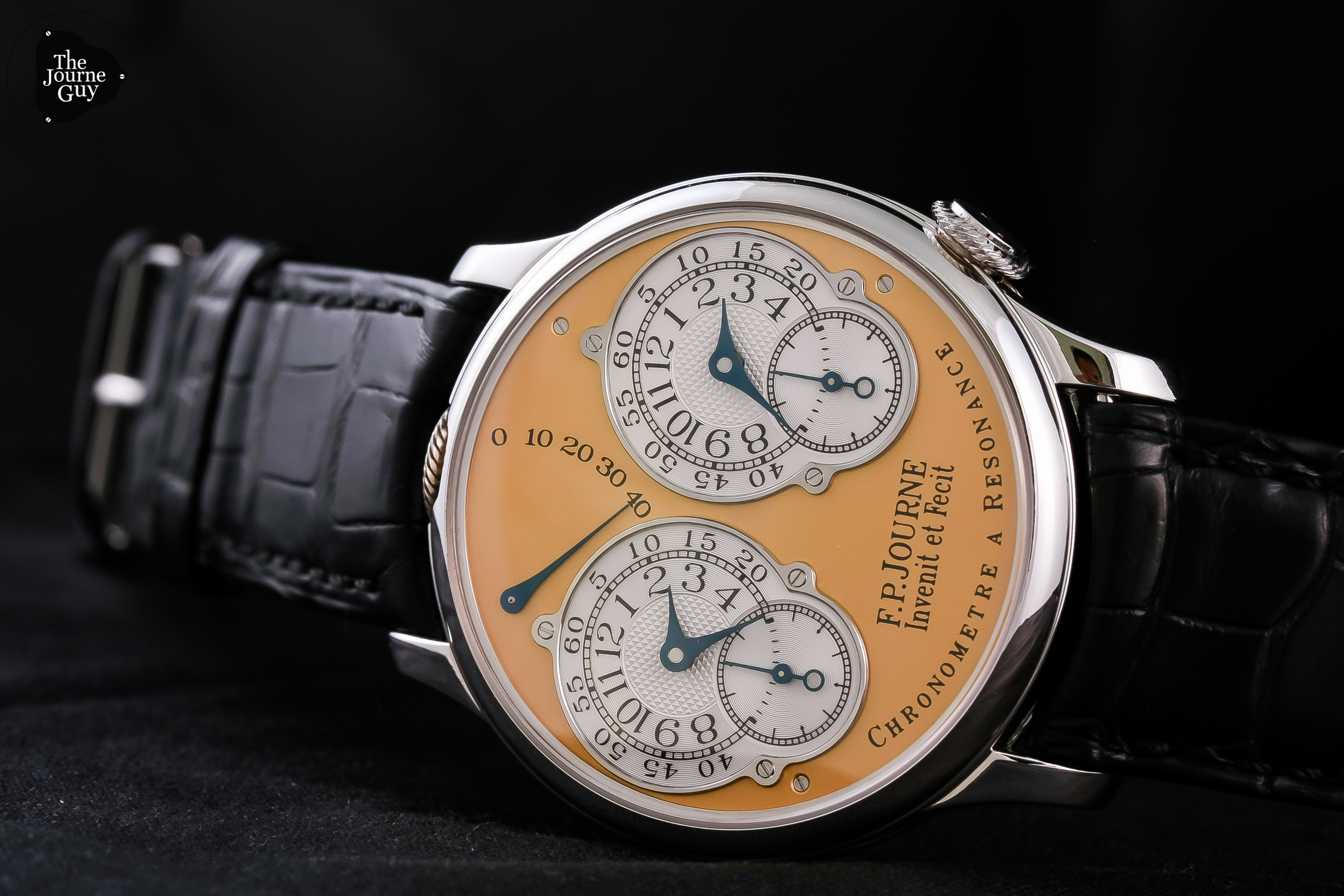The Chronomètre Résonance was first released in 2000 as the second model in the Montres Journe SA collection, only one year into the brand’s existence. Whereas I’ve recently wrote an article on the history of Journe & Resonance, let’s take a closer look at N°000, for it is far more interesting than one would come to think.
It is important to note that for each model released, the company reserves the case N°00 for company records. The watch however is not necessarily a prototype. I have come to learn that when it comes to Journe and prototypes, the cases are irrelevant. François-Paul will typically begin a movement using brass bridges (not 18k gold) and once the watch is in working order, you could call it a primary prototype. Following the prototype in brass, he will attempt it again with the company’s signature rose gold movement and case the watch in the appropriate case, which he will later go on to wear in the months prior to an official launch. This period is often referred to as the official “break-in” period for the watchmaker, and for everyone’s knowledge the watch would be the official prototype.
Mr. Journe will typically wear this prototype for the following year, or at least until he needs to work on another piece. This prototype isn’t always numbered as a prototype i.e. it’s not always N°000, and when I asked Mr. Journe about it he usually replies with, “I just take whatever is available,” in terms of the case. Once Mr. Journe is done with the watch he would either keep it as a sample or recase it. In other words, the N°000 case is always put aside until it is ready, which is not necessarily immediately. Now, you might be wondering why I mention all this, and I assure you I have a reason so just keep it in mind for now.
N°000 Résonance
I recently requested to take some photos of the company’s Resonance which is N°000. When François-Paul brought it over to me it was wrapped in a protective wrap labeled N°000. He took off the wrap, gave me the watch and I noticed something slightly odd regarding the dial.
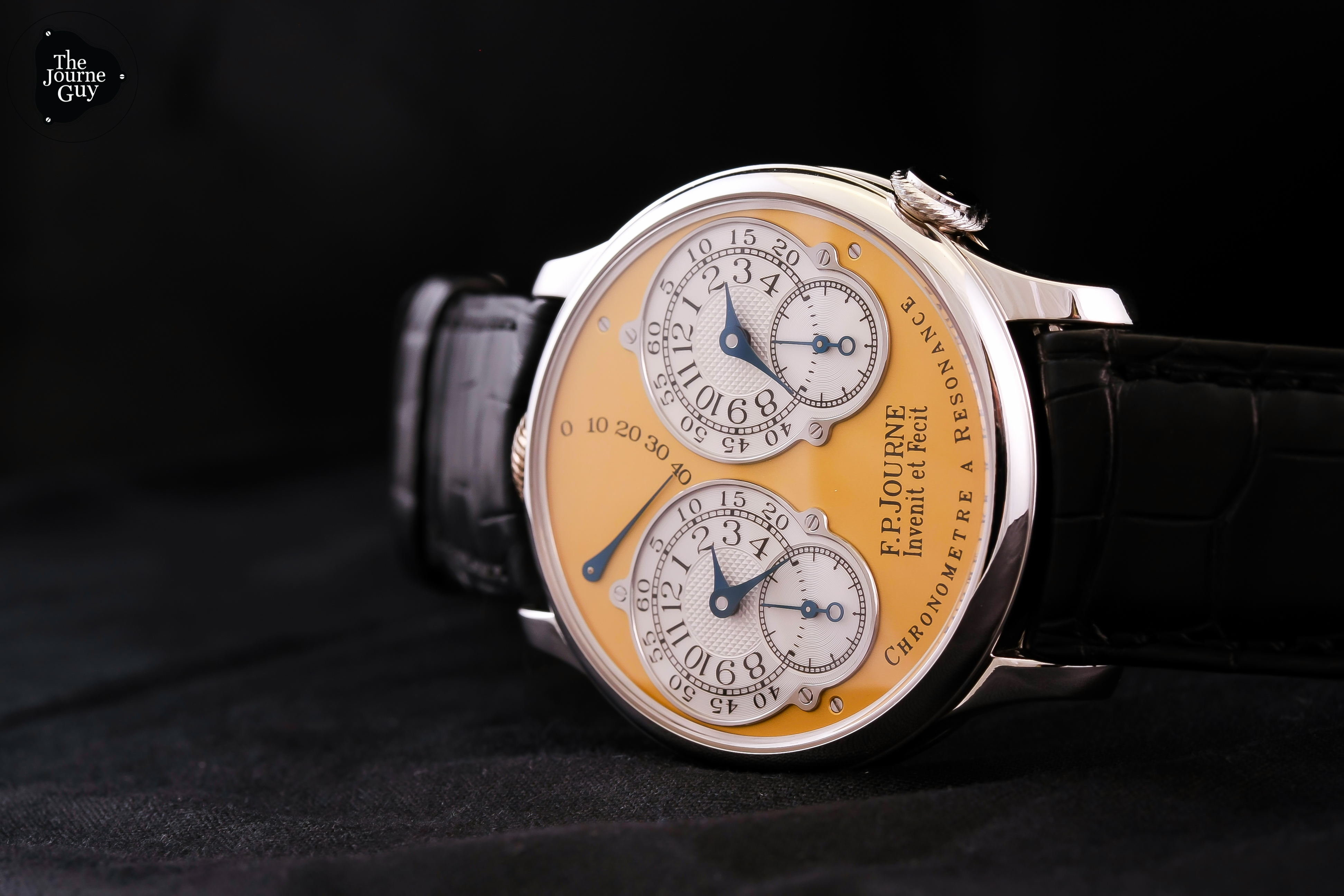
It is well known (I think) that early Journe dials were shiny and the earliest were even hand-finished. The shine comes as a result of a lack of lacquer (from my understanding) or coating which would typically prevent the dial from oxidizing. Mr. Journe later decided to change the dial finishing process due to customer demand (the whining bunch) but in return, the matte dials have lasted the years in a more preserved condition.
Anyhow, upon observing this particular Resonance, I noticed that the dial was rather matte and surprisingly so. Here I was expecting the oldest Resonance dial and this one looks like it was very modern, with not single trace of patina on it since 2000. It didn’t take long for Journe to acknowledge the dial and he proceeded to admit that even though the case was made at start, he never actually used it until years later. In fact, by the time the case was used, he apparently ran out of all the original shiny dials and just used whatever he found, in this case a matte yellow dial.
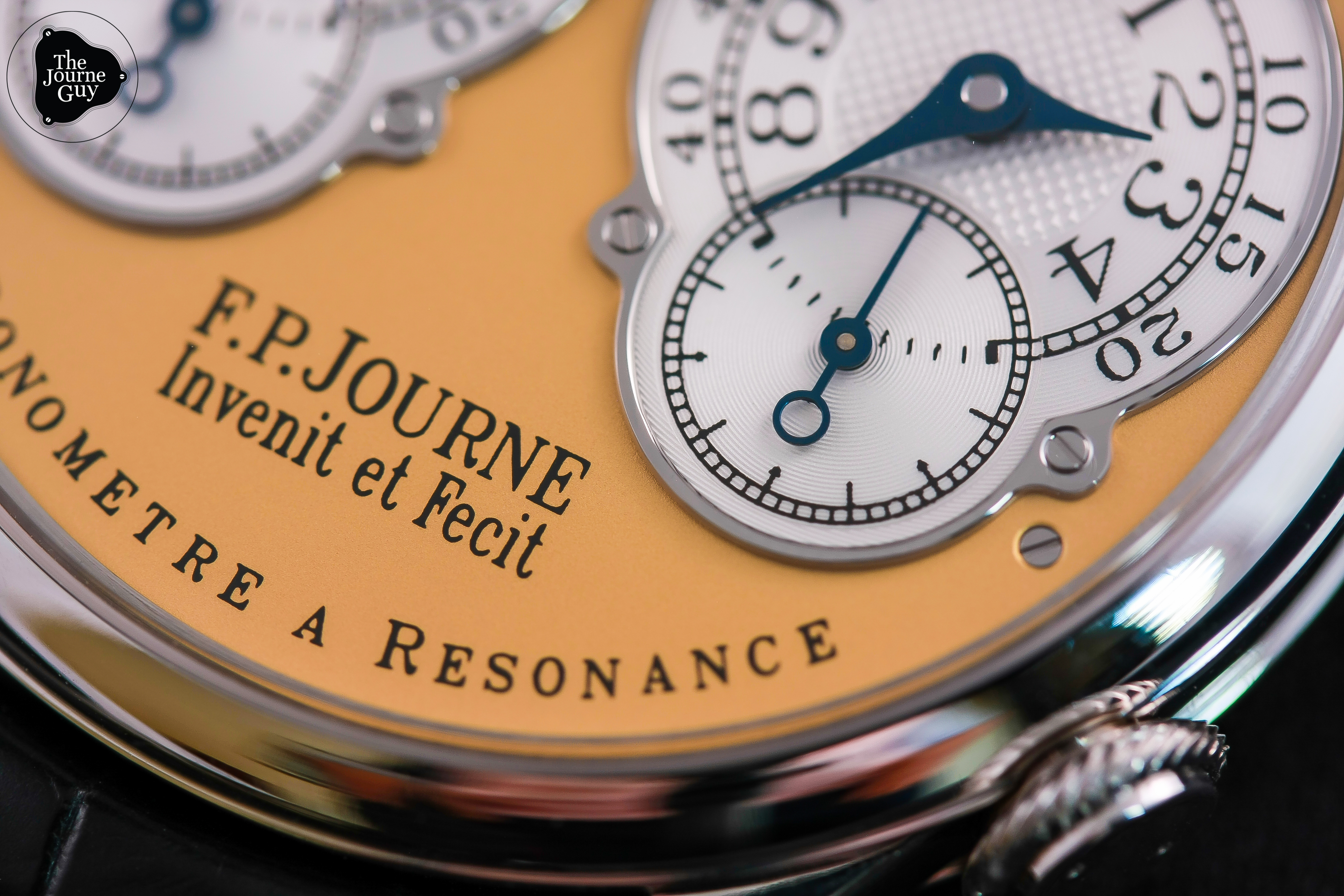
The dial aside, flipping over the watch was, typical of Journe, like falling into Wonderland. Ever since my early days collecting Journe, I have always had a soft spot for the brass Resonance movement, and if you ask me today I would pick it over any other brass Journe. There is just something special about the symmetry and numerous bridges all put together; in this case the most iconic Journe movement design ever. If you have any doubt regarding my opinion then let me add this movement is the only Journe movement that is unlabeled, without even a caliber reference, yet easily recognizable. Adding to the spice of this particular Resonance is a crystal clear caseback, without a single spec of dust blocking your view. This watch obviously hardly sees the light of day.
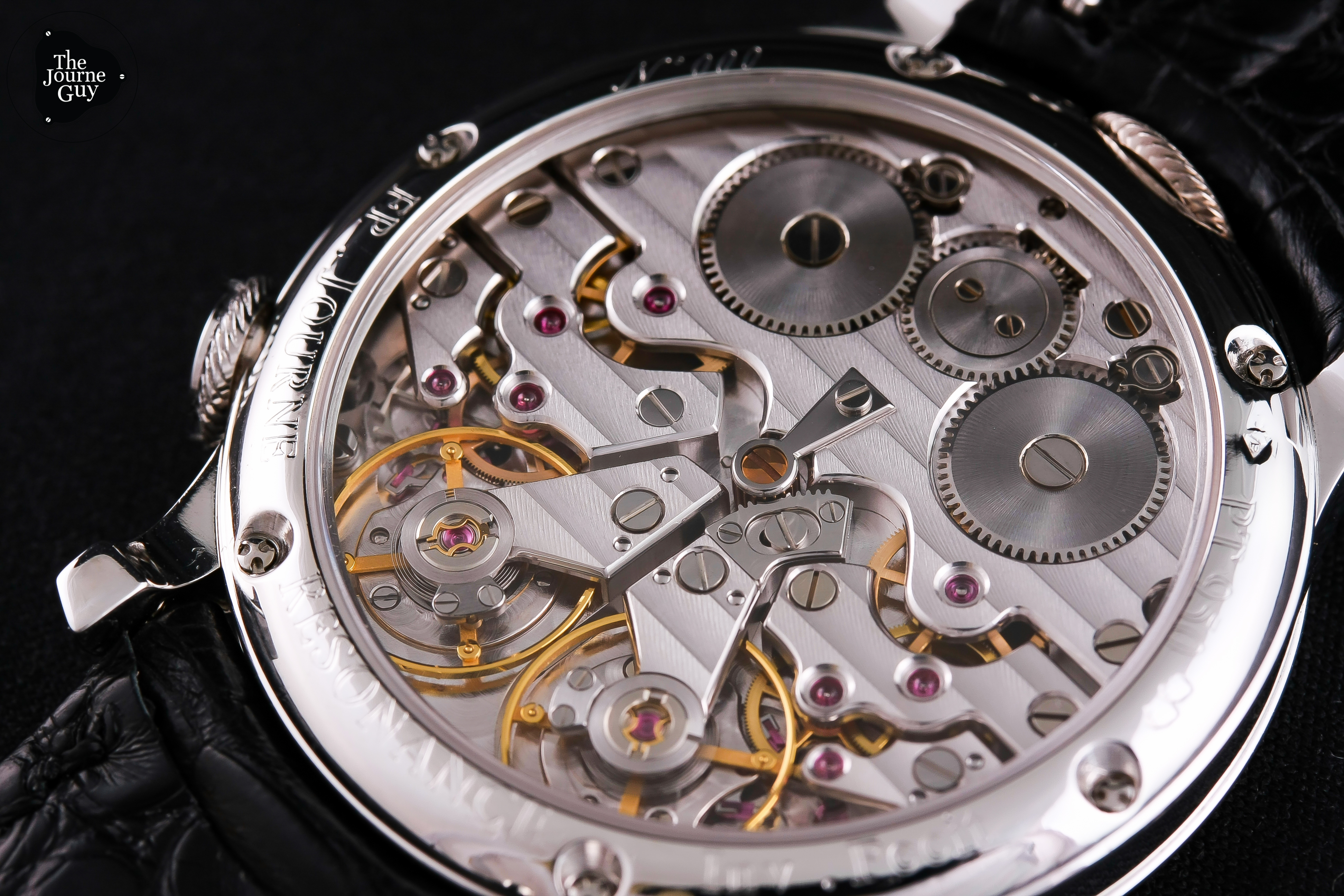
Typical of the earliest Journe cases, the engravings are extremely shallow giving an almost “over-polished” look. Keep in mind, while today F.P. Journe manufacture their own cases, back in 1999 the cases were outsourced.
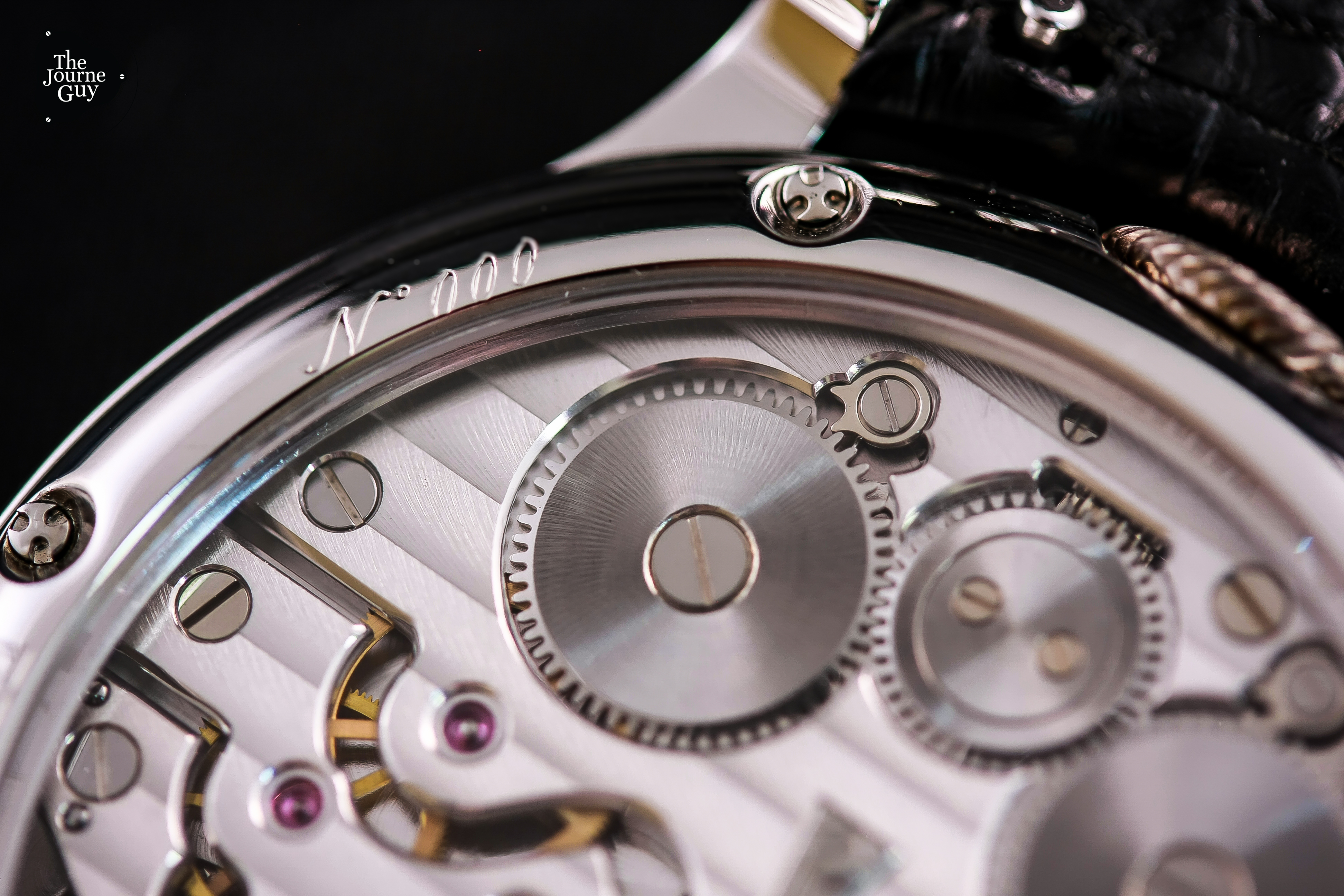
Part of the magic of this particular caliber comes in how close the two balance wheels are placed next to each other. I have seen many Resonance pieces and what strikes me first is how tiny the space is between the two beating balance wheels; some have marked it as within 0.4mm apart. However, in this specific Resonance the balance wheels are placed closer than any other Resonance I have seen before. I would be surprised if a hair would fit in this tiny space.
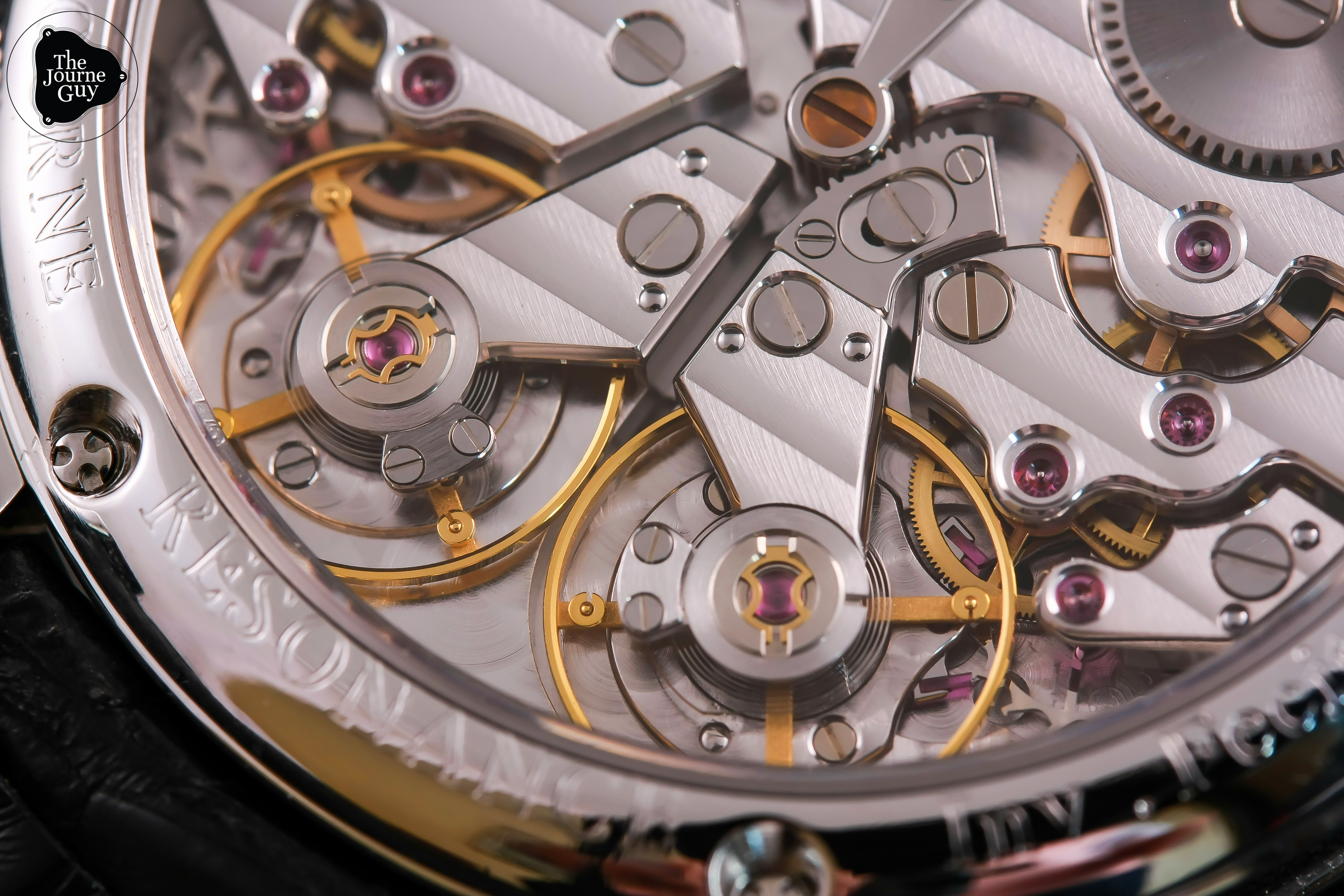
In essence, the Resonance is not really a complication. The interesting thing about the design it that it essentially is two simple mechanical watch movements that synchronize together using the natural phenomenon of resonance, thanks to the proximity and careful regulation of the two escapements. While the movement of the current Resonance has been in production since 2000, many changes are planned for the near future but that is another article for another day.
